Rossia pacifica (Berry, 1911)Stubby Squid, Short Squid |
|
| Synonyms: None |  |
| Phylum Mollusca
Class Cephalopoda Subclass Coleoidea Superorder Decabrachia Order Sepiolida Family Sepiolidae |
|
| Found in Friday Harbor, WA. Picture taken at Rosario Beach Marine Station, WA | |
| Photo by: Robbie Wheeling, July 22, 2002 | |
How to Distinguish from Similar Species: No similar species.
Geographical Range: This species ranges along the north Pacific rim from Japan to southern California.
Depth Range: This species is benthic in coastal waters, subtidal (16-370 m) but on rare occasions at night found swimming at the shore in the intertidal zone.
Habitat: This species is fairly common on bottoms of sand or muddy sand.
Biology/Natural
History: These small
sepiolids crawl on their arms or swim, and dig shalow depressions in
the
sea floor in which they rest with their arms rolled under their
heads.
They inhabit shrimp beds. Over 80% of their diet consists of shrimp,
although
crabs, mysids, small fishes, and cephalopods are also eaten.
Spawning
occurs in the summer and fall in deep water. Each egg (4-5 mm
in
diameter) is contained in a large (8 mm by 15 mm) capsule.
The capsules
are attached singly or in small groups to seaweeds or other objects on
the bottom.
| Return to: | |||
| Main Page | Alphabetic Index | Systematic Index | Glossary |
References:
Dichotomous Keys:
Carlton,
2007
Jorgensen,
2009
Kozloff,
1987
Scott
and Blake, 1998
General References:
Morris
et al., 1980
Norris, 2003
Scientific Articles:
Hochberg, F.G., 1998. Class
Cephalopoda: Taxonomic Atlas
of the Benthic Fauna of the Santa Maria Basin and the Western Santa
Barbara
Channel. Volume 8 part 1: The Aplacophora, Polyplacophora,
Scaphopoda,
Bivalvia and Cephalopoda, pp. 1-250. P.V. Scott and J.A.
Blake, Editors.
Santa Barbara Museum of Natural History, Santa Barbara, CA, USA
General Notes and Observations: Locations, abundances, unusual behaviors, etc.:
Nine species of dicyemid mesozoans have been recorded from the kidneys and branchial hearts of R. pacifica. Of these, only two are known to occur off the west coast: Dicyemennea brevicephaloides and D. parva.
 This
individual, with body length about 7 cm long not including tentacles,
was also collected by otter trawl in the San Juan
Channel.
Photo August 2011 by Dave Cowles
This
individual, with body length about 7 cm long not including tentacles,
was also collected by otter trawl in the San Juan
Channel.
Photo August 2011 by Dave Cowles
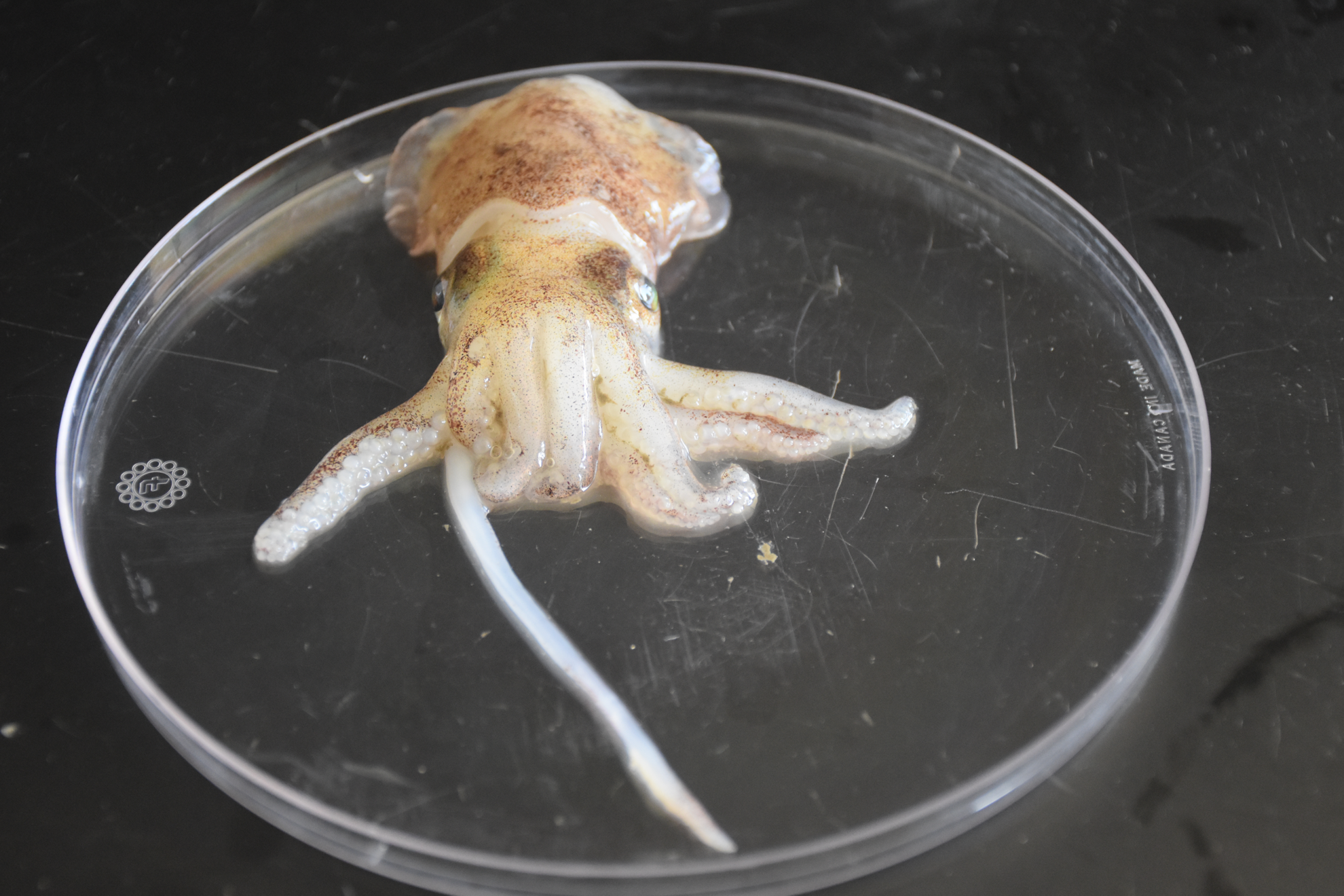
This recently deceased individual, captured at 100 m depth by otter
trawl in the San Juan Channel, has one tentacle
extended past the arms. The petri dish the animal is in is 15 cm
diameter.
Although the animal is unresponsive its chromatophores are still
changing
colors. Photo by Dave Cowles, July 2022
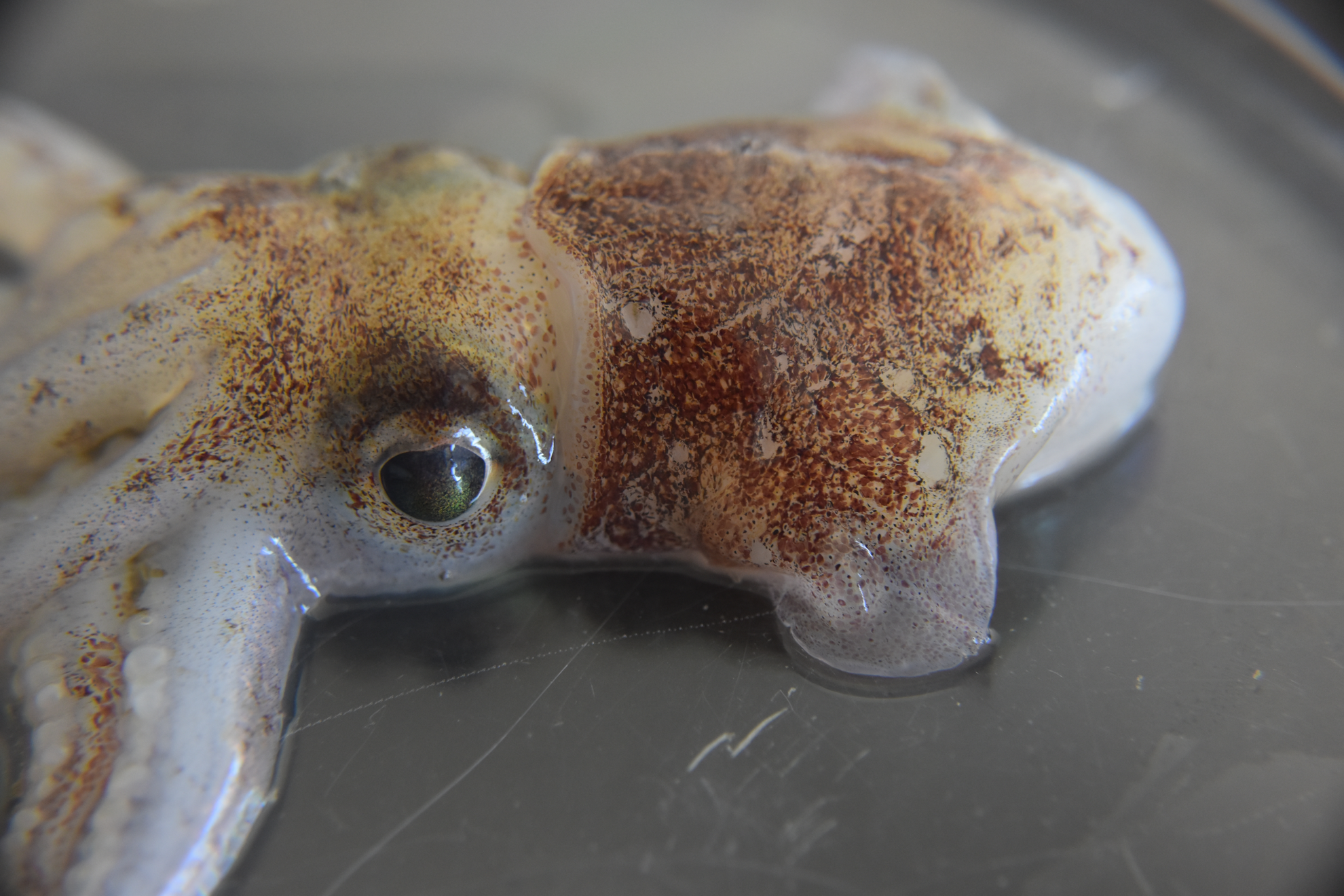 This
side view of the same individual shows the short body and rounded fins
characteristic of this species. Photo by Dave Cowles, July 2022
This
side view of the same individual shows the short body and rounded fins
characteristic of this species. Photo by Dave Cowles, July 2022
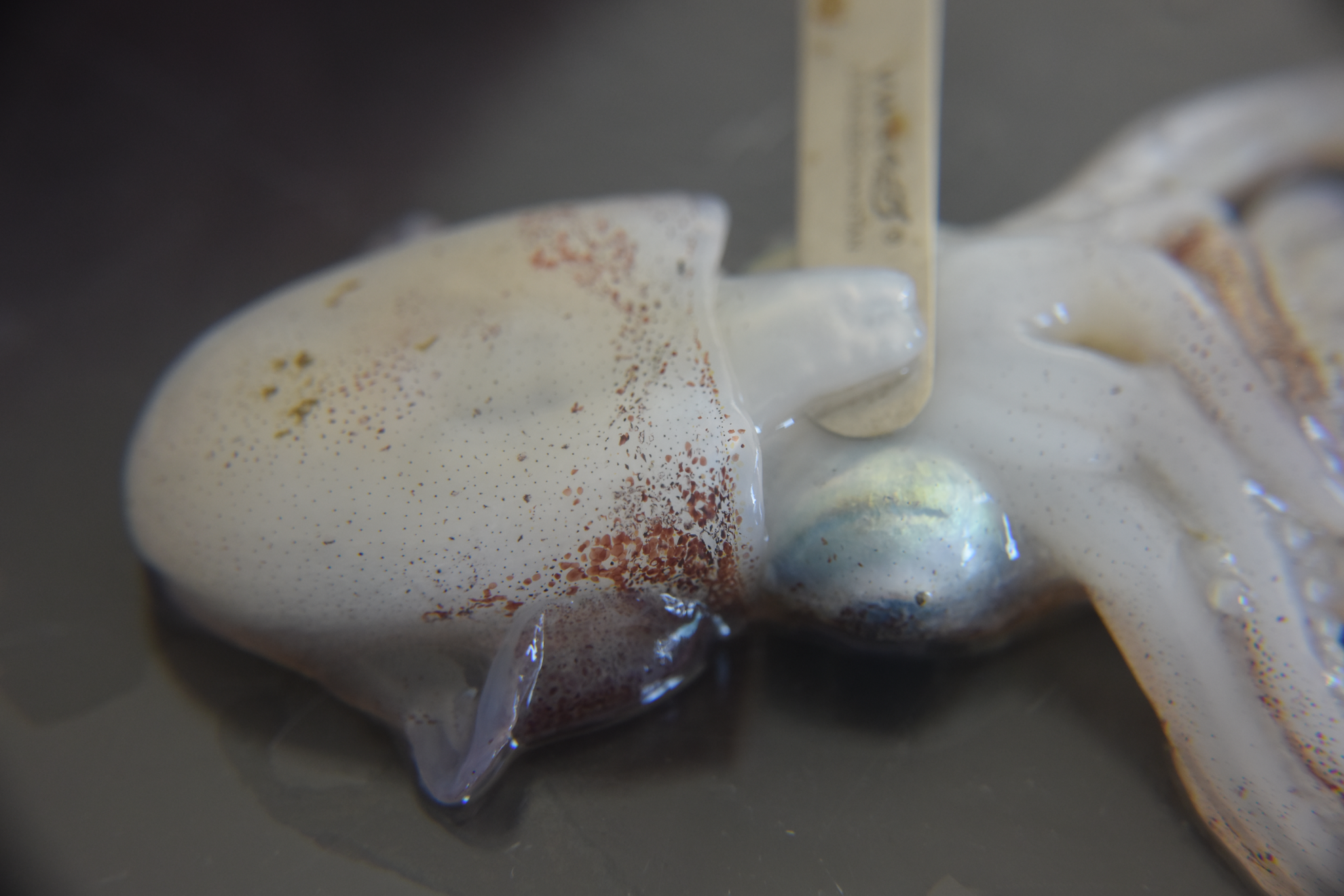
This species typically remains on or near the bottom or buries in the
sediment. This view of the animal's under (ventral) side shows its
lighter
pigmentation there and its excurrent
siphon. Note also that the edges of the mantle
cavity are free. Photo by Dave Cowles, July 2022
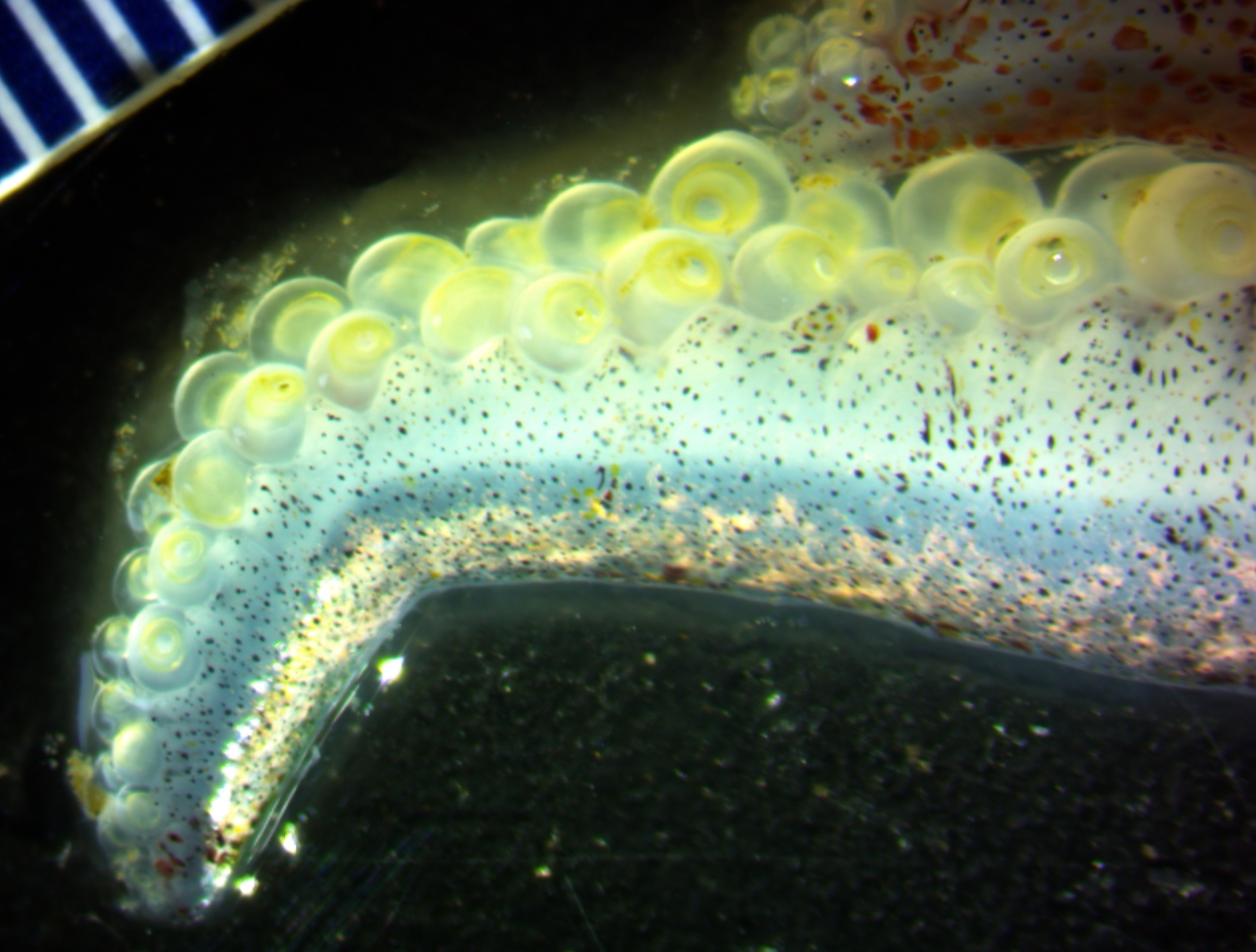
Here is a close-up view of one of the arms of the same individual.
The scale is millimeters. Photo by Dave Cowles, July 2022
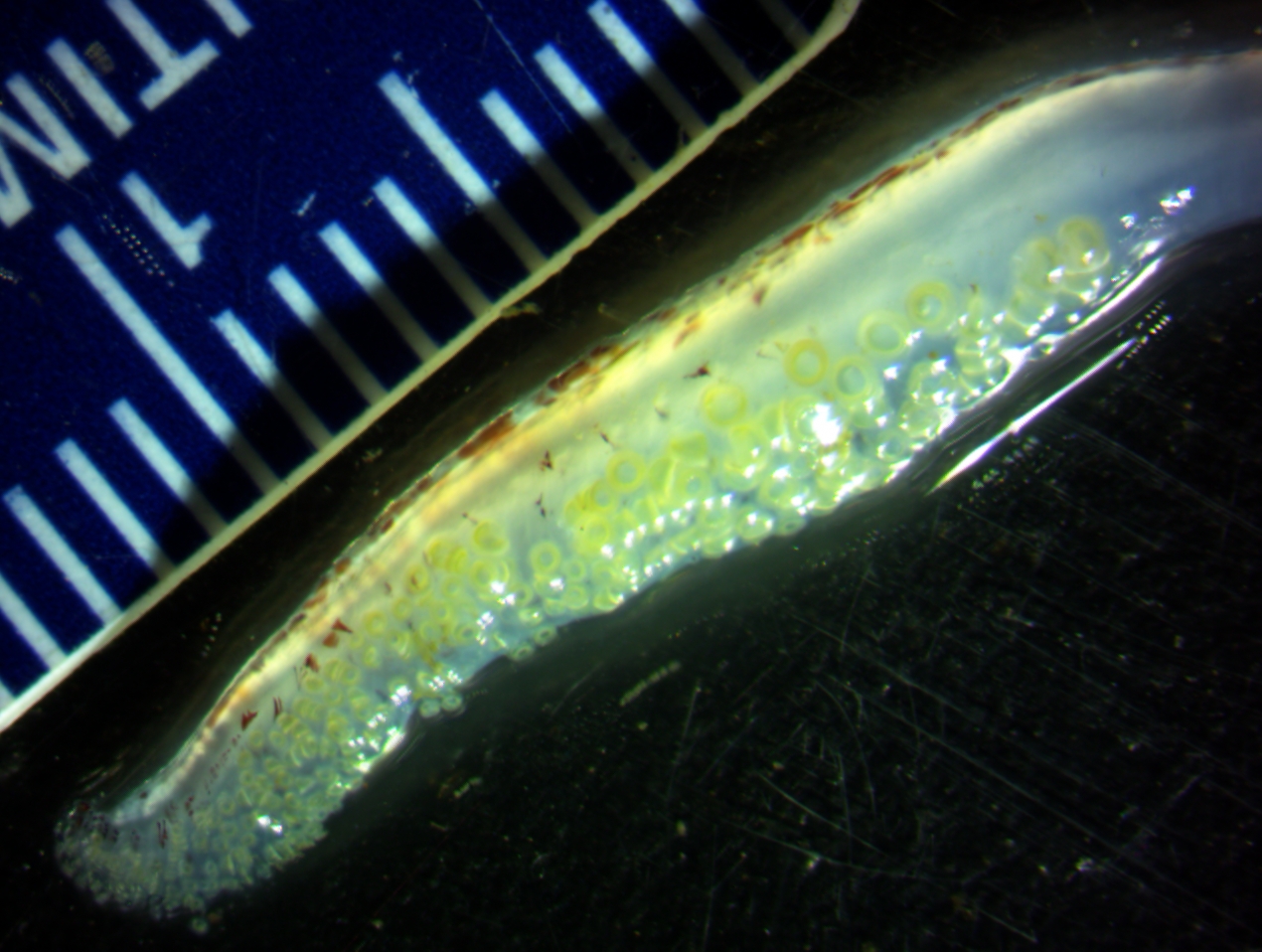
This closeup of the tentacle pad shows its different shape. The suckers
are lined with yellowish flexible chitinous sheaths that no doubt help
them fasten more tightly onto prey. The scale is millimeters. Photo by
Dave Cowles, July 2022.
Authors and Editors of Page:
Anna Dyer (2002): Created original page
Edited by Hans Helmstetler 12-2002, Dave Cowles 2005